Harbin Travel Guide 2025
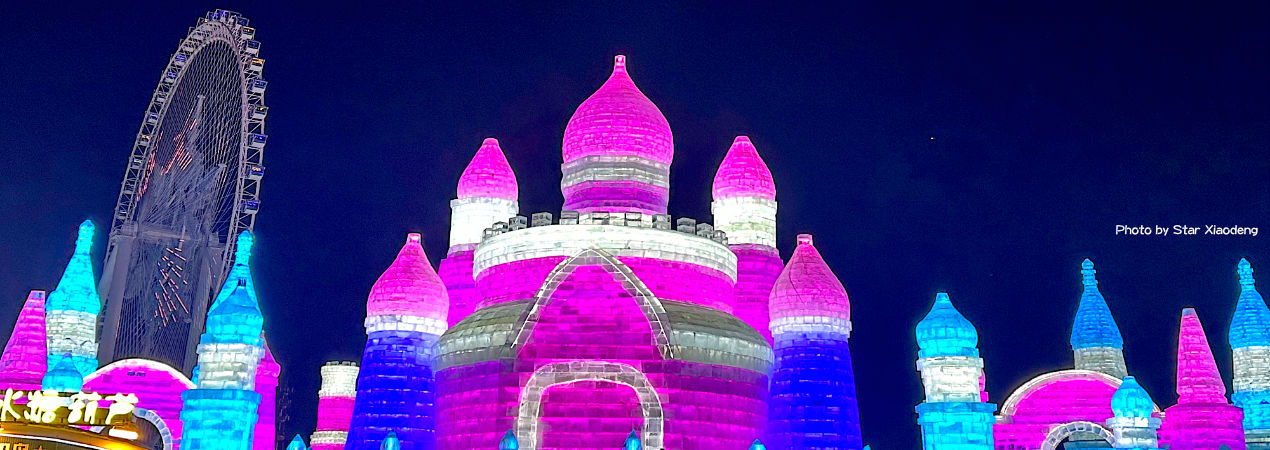
Harbin, the 'Ice City,' is Heilongjiang's capital in Northeast China. It's China's largest provincial capital by area, covering over 53,000 square kilometers. Essentially, it's the political, economic, and cultural hub for northern Northeast China.

Olunchun people
Source from: Xiaohongshu ID - 953586445
The unique historical process and geographical location have created this beautiful city with a foreign ambiance, with the St. Sophia Cathedral and the Russian-style buildings dotted along the Central Street.
Harbin not only blends Chinese and foreign cultures but also incorporates the historical and cultural elements of the ethnic minorities in the north, including over 40 ethnic groups such as the Chaoxian nationality, the Man nationality, the Mongolian nationality, Sibe people, Daur ethnic group, the Ewenki nationality, and Olunchun.
Furthermore, Harbin is one of the birthplaces of the world's ice and snow culture. The Ice and Snow World, the ice sculptures and lanterns in Zhaolin Park, the "Diamond Sea" on the Songhua River, winter swimming, and the snow sculptures on Sun Island are renowned both at home and abroad. Harbin is a famous historical and cultural city as well as a tourist city in China.
- English Name: Harbin
- Chinese Name: 哈尔滨 (hā ěr bīn)
- Province: Heilongjiang
- Location: Northeast China
- Area Code: (+86) 0451
- Zip Code: 150000
- Airports: Harbin Taiping International Airport,IATA:HRB,ICAO:ZYHB
- Population: about 9.4 million
- Railway Stations: Harbin Station, Harbin West Station, Harbin North Station, Harbin East Station, Acheng Station, Hulan Station, Shuangcheng North Station
- Main Districts: Daoli, Nangang, Daowai, bungalow, Songbei, Xiangfang, Hulan, Acheng, Shuangcheng
The Best Times to Visit Harbin
Best time is either summer, like June to August, or in the winter. Summer's pretty cool weather-wise, a nice break from the heat. But winter, even though it's freezing, is amazing because of all the snow and ice. Definitely check out the Ice Festival if you go then – it runs from late December to February and has these crazy ice sculptures and carvings.
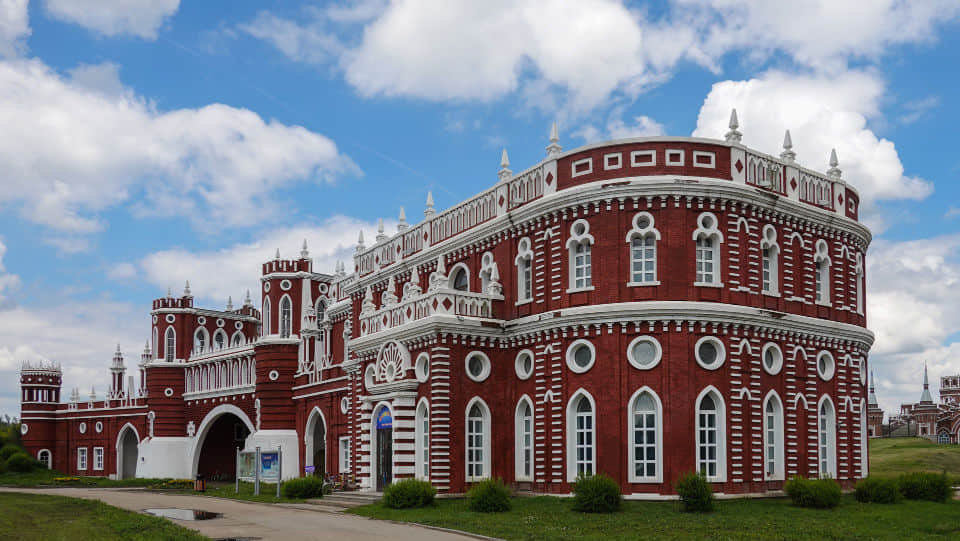
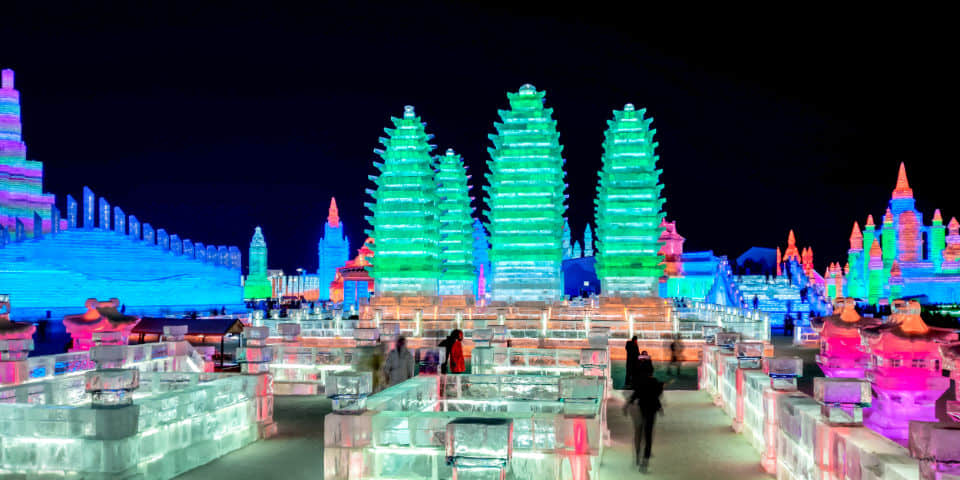
Monthly Average Temperature in Harbin
| Month | Average Temperature (°C) | Average Temperature (°F) |
|---|---|---|
| January | -19℃ | -2.2℉ |
| February | -14℃ | 6.8℉ |
| March | -3℃ | 26.6℉ |
| April | 8℃ | 46.4℉ |
| May | 16℃ | 60.8℉ |
| June | 22℃ | 71.6℉ |
| July | 24℃ | 75.2℉ |
| August | 23℃ | 73.4℉ |
| September | 16℃ | 60.8℉ |
| October | 6℃ | 42.8℉ |
| November | -4℃ | 24.8℉ |
| December | -16℃ | 3.2℉ |
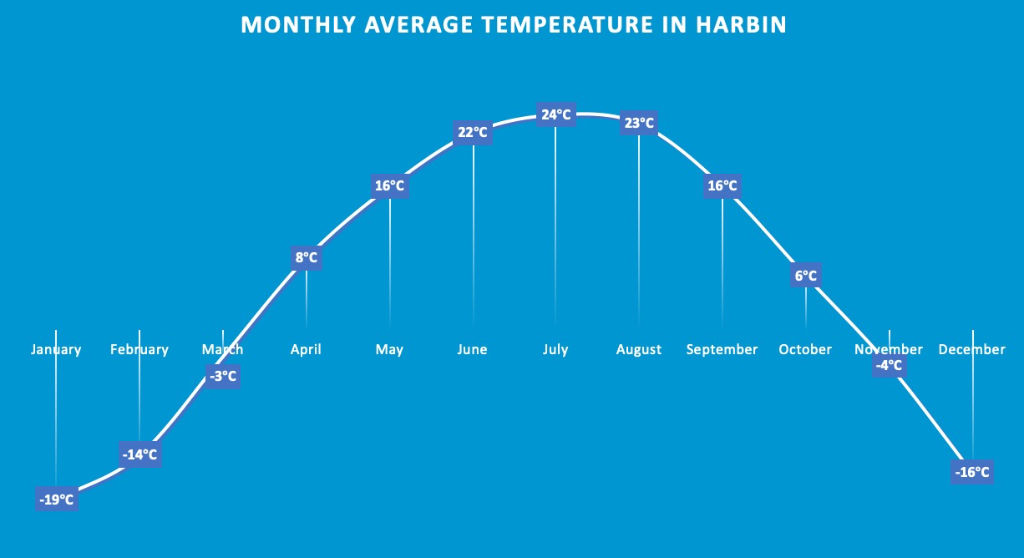
What to Wear
The four seasons in Harbin are distinct.
Summer in Harbin's pretty comfy, like 22°C (72°F) on average, so t-shirts and shorts are good. Just bring a light jacket or sweater too, ‘cause it can get cooler at night or if it rains.
Winter's a whole different beast – it averages -18°C (0°F), and nights can drop to -30°C (-22°F)! Seriously, you need a heavy down jacket, hat, scarf, gloves… the works. Staying warm is key.
What to See and Top Things to do in Harbin
Harbin Ice and Snow World

It's the biggest ice and snow park in the world, crazy enough. It opened in 1999 and gets packed every year – over a million visitors. It's basically Harbin's winter symbol. Think thousands of amazing ice sculptures, but also tons of activities. They've got these huge ice slides, a snow Ferris wheel, you can ride snowmobiles and ATVs, go skiing… it's a blast.
Zhongyang Street
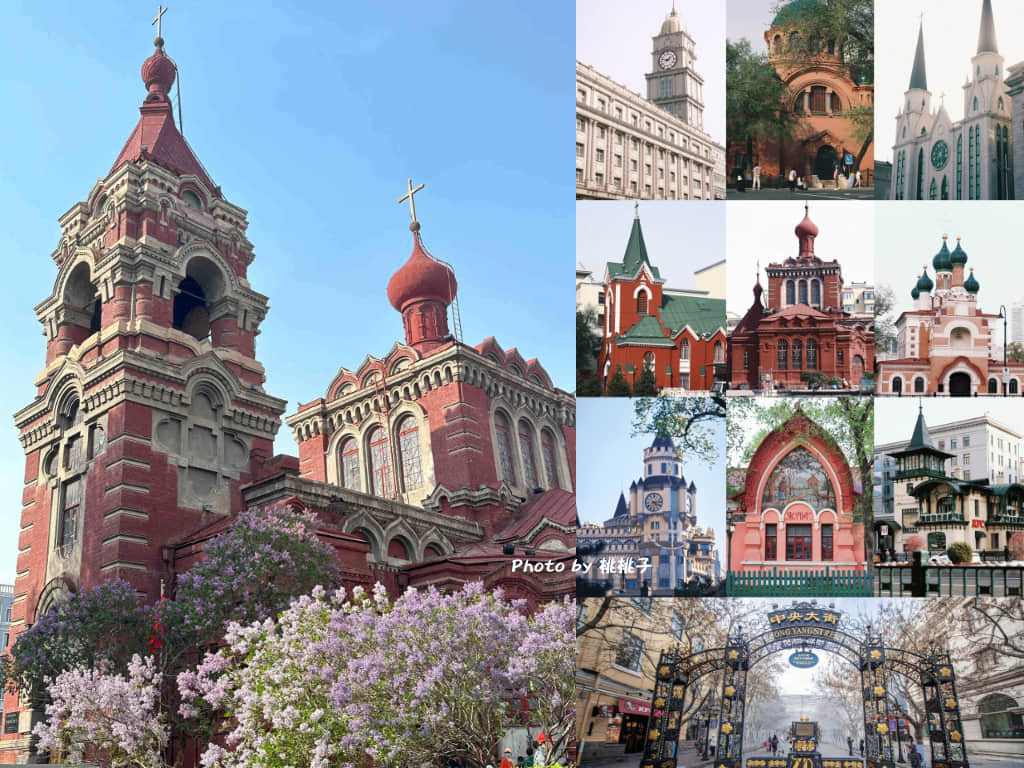
Zhongyang Street was built in 1898 and is the most lively commercial pedestrian street in Harbin. It stretches from the Flood Control Memorial Tower in the north to Jingwei Street in the south. The entire street features 71 European-style and neo-European-style buildings, including 13 protected buildings at the municipal level in styles such as Renaissance, Baroque, Eclecticism, and Modernism, forming an architectural art gallery. In addition, there are various department stores and restaurants.
St. Sophia Cathedral.

St. Sophia Cathedral is the largest Orthodox church in the far East and is located in the Architectural Art Square.
With a strong exotic atmosphere, the church has become a unique landscape in Harbin, is the fourth batch of national key cultural relics protection units, and is now the Harbin Museum of Architectural Art.
Sun Island Scenic Area

Sun Island Scenic Area is kind of like that friend who’s good at everything: countryside charm, European flair, and a serious talent for turning ice and snow into art. In the summer, it’s a total escape—cool breezes, picturesque spots like Squirrel Island (yes, there are squirrels), and gardens that look straight out of a fairytale. Fast forward to winter, and bam! It transforms into the largest snow-themed park in China. The snow sculptures are so stunning, you’ll probably start questioning if they’re even real!
Zhaolin Park
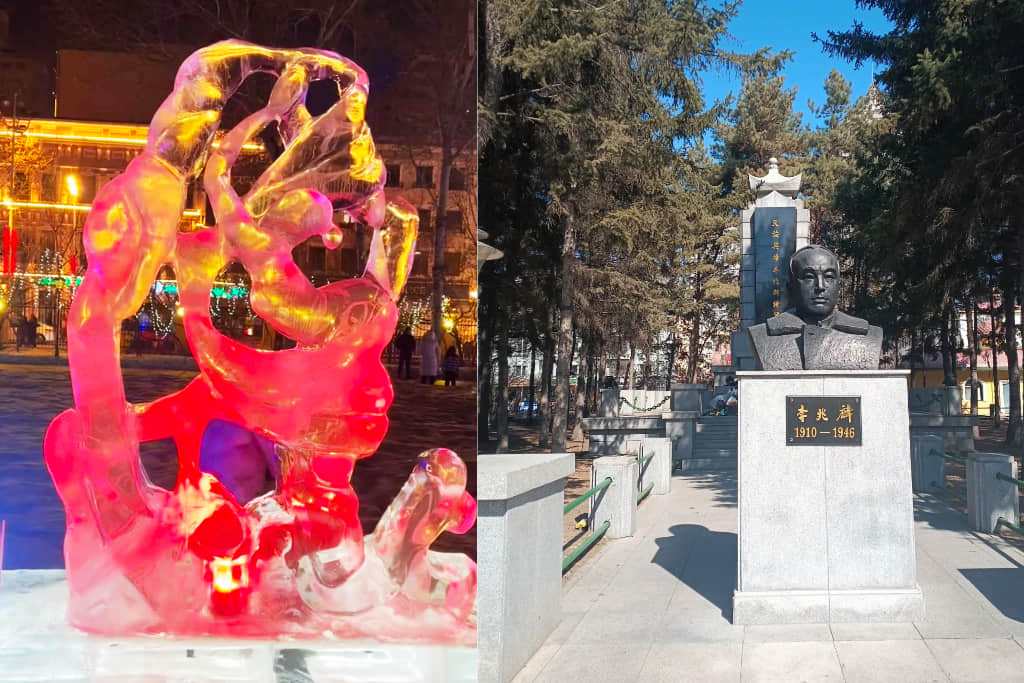
Zhaolin Park, named after General Li Zhaolin and around since 1906, really gets exciting in the winter. That’s when the Ice Lantern Fair happens, featuring over 200 ice sculptures. And it’s not just for looking—there are free ice slides and an ice rink if you’re in the mood for some winter playtime.
The Yabuli Ski Resort
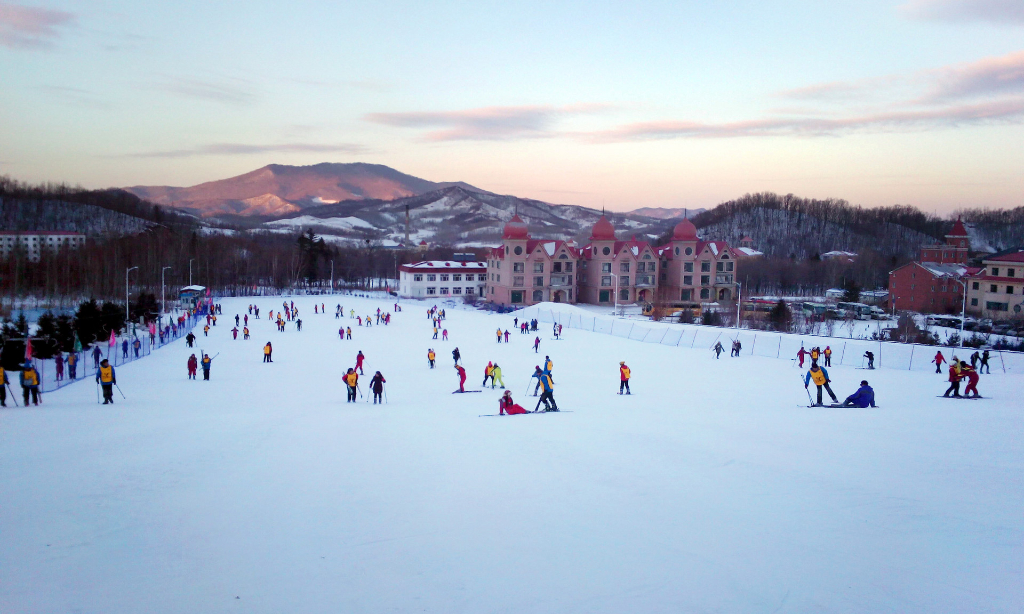
Yabuli Ski Resort is home to three peaks—Daguokui, Erguokui, and Sanguokui—ranging from 1,000 to 1,374.8 meters high. But here’s the fun fact: this isn’t just for vacationers. It’s actually where China’s Antarctic team gets ready for the big freeze. So, you know it’s legit!
Snow Village
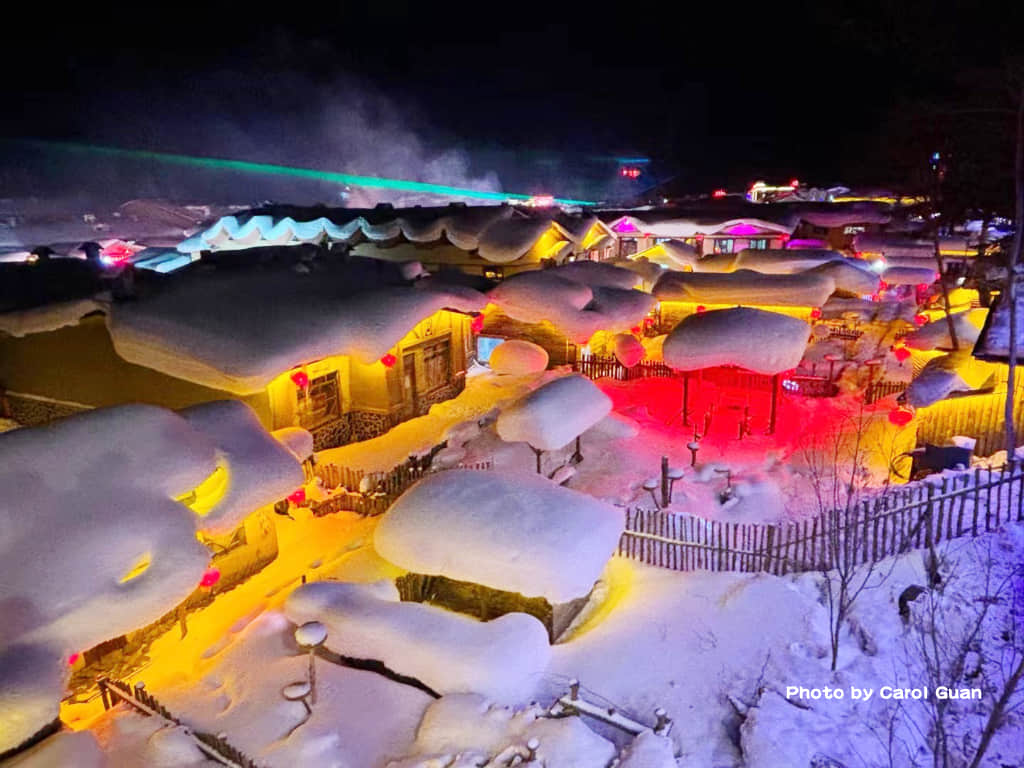
"A Fairy Tale World in Winter"
The China Snow Town Tourism Festival is one of the three major ice and snow tourism celebrations in Heilongjiang Province.
Located in Shuangfengmuchang (under the jurisdiction of Mudanjiang City), Hailin City, about 280 kilometers from Harbin, a 5-6 hour drive.
This traditional village consists of about 20 wooden houses. In winter, the area has a long snow season with frequent snowfall, with continuous snow cover from October to May of the following year. The average annual snow depth reaches 2 meters, making it one of the snowiest places in China, and the snow quality is good with high stickiness, so it is called the "China Snow Village."
Standing on the boardwalk, the snowy little town is in full view. Additionally, you can watch local dialect performances by locals at the Dream Home. Enjoy outdoor snow activities like sledding, snow tubing, skiing...or visit the Folk Culture Museum to learn about the history and facts of the local people, the town, and the loggers.
If you like hiking, go for a hike nearby at Yangcao Mountain, watch the sunrise in the snowy forest, and you'll feel like you've entered a magical dream world: white snow, red sun, snow pines, and auspicious clouds perfectly combined into a beautiful picture.
The best time to visit China's Snow Town is mid-December, January and February.
Harbin Transportation
Harbin Metro

Harbin currently has 3 metro lines: Line 1, Line 2, and Line 3.
| Subway line | Subway station |
|---|---|
| Harbin Metro Line 1 (06:00 – 22:30) | Harbin East Station - Huashu Street Station-Jiaotong College Station - Taipingqiao Station - Engineering University Station - Yanchang Station - First Hospital Station of Medical University - Museum Station - Railway Bureau Station - Harbin University of Technology Station - West Daqiao Station - Hexing Road Station - Xuefu Road Station - University of Science and Technology Station - Heilongjiang University Station - Second Hospital Station of Medical University - Hada Station - Harbin South Station - Tongjiang Road Station - Wapanyao Station - Jingpo Road Station - Bohai Road Station - Xinjiang Street Station |
| Harbin Metro Line 2 (06:00 – 22:30) | Jiangbei University Town - Harbin North Railway Station – Dagengjia - Longchuan Road - Shimao Avenue - Ice and Snow World - Sun Island - People's Square - Zhongyang Street - Shangzhi Street - Harbin Railway Station - Museum of Heilongjiang Province - Workers' Cultural Palace - The People's Government of Heilongjiang Province - Provincial Hospital - Zhujiang Road - Nanzhi Road - Northeast Agricultural University - Meteorological Observatory |
| Harbin Metro Line 3 (06:00 – 22:30) | Chengxiang Lu Station - Harbin West Station-Kaishengyuan Plaza Station-Haxi Street Station - Hospital Station of Medical University-Zhengyi Road Station-Cancer Hospital Station-Xusheng Street Station-Labor Park Station-Jinxiang Street Station-Steam Turbine Plant Station-Oil Fong Street Station-Gongbin Road Station-Zhujiang Road Station-Xiangjiang Road Station-Exhibition Center Station-Haihe East Road Station-City second Hospital Station-Dayoufang Street Station-Taiping Bridge. Station-Jingyu Park Station-Mosque Station-China Baroque Street Station-North Road Station |
Harbin Bus

The Harbin Bus system offers a convenient and affordable way to travel around the city. With a vast network of bus routes and stops, you can easily reach various destinations within Harbin.
City Lines:
- Regular Buses: 1 Yuan
- Air-conditioned Buses: 2 Yuan
Suburban Lines:
- Starting Fare: 1 Yuan (Regular Buses) or 2 Yuan (Air-conditioned Buses)
- Additional Fare: 1 Yuan per additional zone
Business Buses: 5 Yuan
Operating Hours
- Summer: 6:00 AM to 8:30 PM
- Winter: 6:00 AM to 8:00 PM
- Late-night Buses: 9:30 PM to 10:00 PM
Taxis in Harbin
Taxis in Harbin operate from 6:00 AM to 11:00 PM. The starting fare is 8 yuan for the first 3 kilometers. For distances beyond 3 kilometers, the fare is 1.8 yuan per kilometer.
From 11:00 PM to 5:00 AM, the starting fare is 9 yuan. Other fares remain the same. If passengers require the driver to wait for them during the ride, a waiting fee of 0.6 yuan per minute will be charged.
All taxis are equipped with taxi meters. Passengers should pay according to the displayed fare.
At train stations and airports, there are designated taxi waiting areas where you can find taxis
Here is a list of taxi fares from the South Square of Harbin Station to various major locations for your reference.
| The South Square of Harbin Station To | Distance (km) | Taxi Fare (CNY) |
|---|---|---|
| Harbin Taiping International Airport | 37 | 98-130 |
| Harbin West Railway Station | 8.5 | 21-29 |
| Harbin East Railway Station | 8.8 | 21-29 |
| Heilongjiang Provincial Museum | 1.7 | 9-13 |
| Church of Santa Sophia | 3.6 | 11-16 |
| Heilongjiang Forest Botanical Garden | 9 | 21-29 |
| Sun Island | 10.3 | 25-36 |
| World of Ice and Snow | 10.3 | 25-36 |
| Hulan estuary wetland | 39 | 104-137 |
| Harbin Rongchuang Paradise | 16.1 | 41-58 |
| Laodaowai or Chinese Baroque Street | 4.2 | 13-18 |
| Northeast Tiger Forest Park | 16.6 | 41-58 |
| Poseidon Ocean Kingdom | 21.4 | 55-76 |
Harbin Airport
Harbin Taiping International Airport is about 32 kilometers (20 miles) away from the center of Daoli District. As an important transportation hub in Northeast China, most cities have flights to and from Harbin. In addition, there are regular international flights to and from Russia, Japan and South Korea in Harbin.
The distance between major cities and Harbin by air:
| Cities | By Air |
|---|---|
| Beijing | 2 hours |
| Shanghai | 3 hours |
| Guangzhou | 4-4.5 hours |
| Chengdu | 3.5-4 hours |
| Shenzhen | 4 hours |
| Hangzhou | 3 hours |
| Xiamen | 4-4.5 hours |
| Wuhan | 3-3.5 hours |
| Sanya | 5 hours |
| Xi’an | 3 hours |
Transportation from the airport to the city center
There are airport shuttle buses (routes 1, 2, 3 and 4) and taxis between the airport and the city center.
It is cheaper to take an airport bus from Harbin airport to the city than to take a taxi, and an one-way ticket costs only 20 yuan.
It's about an hour's drive from Harbin Airport to downtown Harbin.
Bus Schedules: (The information is for reference only, may be adjusted temporarily.)
| Buses | Stations | Departure Time | Departure Interval |
|---|---|---|---|
| Airport Bus No.1 | Harbin Airport-Kangan Road-Tongda Street-Anfa Bridge-Harbin Railway | From 7:30 Until Arrival of the last flight | According to the arrival of flights |
| Airport Bus No.2 | Harbin Airport-Ling Gong Li-Chilun Road-Harbin West Coach Station-Clothing Mall-Harbin University of Science and Technology-Hexing Commercial Building-Lesong Square-Tongxiang Store-Nongken Building-Tianyang Hotel-Convention Center-Minfang Commercial Hotel | 08:30-01:30 | 30 Minutes |
| Airport Bus No.3 | Harbin Airport-Chilun Road-Guxiang-Anhong Street-Central Street-Baqu-Daowai Coach Station-Jungong-Taiping Bridge-Harbin East Railway Station | 08:30-00:30 | 30 Minutes |
| Airport Bus No.4 | Harbin Airport-Chilun Road-Qunli Yi Da-Qunli Yuan Da-Highway Bridge-Ice and Snow World-Qianjin Dao Kou-Da Geng Jia-Harbin North Raiolway Station-Xueyuan Road | 09:30-00:30 | 1 Hour |
| Wanda Plaza Line | Harbin Airport-Jiangbei Wanda Plaza-Wanda Plaza- Beian Runhe City-Harbin's Outlets | 09:00-00:30 | 1 Hour |
You can also take a taxi from Harbin Airport to the city, which costs about 120 to 150 yuan.
Although it is more expensive than taking the airport bus, it will be more flexible taking into account your own needs.
It takes about 50 minutes from the airport to the city, but it may be longer during peak hours (8 a.m. to 09:30; 6 p.m. to 9 p.m.) when the traffic is heavy.
Now the price depends not only on the distance to the destination, but also on the time spent on the way, so you may have to pay more when there is a traffic jam.
Train to Harbin
Harbin is not only an important railway hub in Northeast China, but also an important channel of Eurasian Continental Bridge.
At present, the main railway stations in Harbin are Harbin Station, Harbin West Station, Harbin North Station and Harbin East Station. There are about 100 high-speed trains to and from Harbin every day.
The following lists some train travel times between Harbin and other cities.
| Cities | High-Speed Railway | Traditional Train |
|---|---|---|
| Changchun | 1-1.5 hours | 2.5-3.5 hours |
| Shenyang | 2-3 hours | 6-7.5 hours |
| Dalian | 3.5-5 hours | 11.5-13.5 hours |
| Qingdao | 10-10.5 hours | 25 hours |
| Beijing | 5-6 hours | 10.5-18 hours |
| Tianjin | 6.5-7.5 hours | 10.5-18.5 hours |
| Shanghai | 13 hours | 24 hours |
| Suzhou | 12.5 hours | 23 -28 hours |
| Nanjing | 11 hours | 21-29.5 hours |
| Hangzhou | No direct high-speed train | 26-36 hours |
| Guangzhou | No direct high-speed train | 34-44 hours |
| Wuhan | 12.5 hours | 23-28.5 hours |
| Xi’an | No direct high-speed train | 33.5 hours |
| Haikou | No direct high-speed train | 48.5 hours |
| Baotou | No direct high-speed train | 27 hours |
Eating in Harbin
Under the influence of Russian and minority food culture, Harbin's diet has two main features: one is that you can taste very authentic northeast food in Harbin.
Second, you can also eat authentic Russian cuisine in Harbin.
Here are 5 must-eat Harbin cuisines:
Dongbei Iron Pot Stew

"In the northeast iron pot can stew all. "
Choose a variety of fresh ingredients such as chicken, duck, fish, geese, ribs and so on into a special iron pot, and northeast specialty wide noodles, dried beans stew together, meat crisp but not greasy, soup mellow and delicious.
The more famous ones are stewed goose, chicken and spareribs in iron pot.
If you are sensitive to taste and can't stand a fishy smell, stewed ribs in iron pot is the most recommended.
Dongbei Guo Bao Rou (Crispy Sweet & Sour Pork)
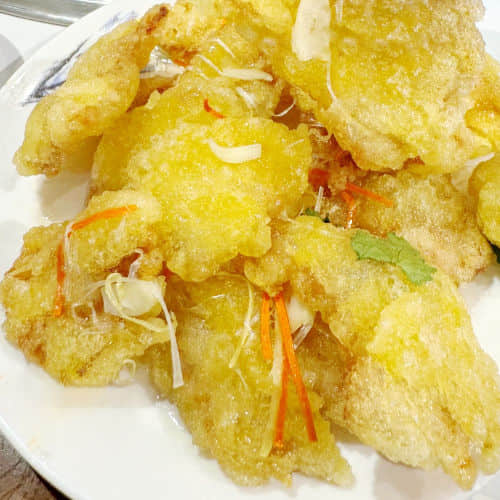
Guo Bao Rou is a must-try dish if you're in Harbin. Thin slices of pork tenderloin, fried to crispy golden perfection, and coated in a sweet-and-sour sauce that’s just the right mix of tangy and tasty. It’s so crunchy you can literally hear it "pop" when you bite in, like pork-flavored popcorn! Locals love it, and tourists can’t leave without trying it. Once you taste it, you’ll see why it’s such a big deal.
Kao Leng Mian

Kao Leng Mian, literally translated as "Grilled Cold Noodles," is a popular and affordable Chinese street food. It features a unique combination of textures and flavors. Thin sheets of cold noodles are cooked on a griddle until slightly crisp, then wrapped with a savory egg mixture and your choice of fillings like sausage or vegetables. The whole creation is drizzled with a flavorful sauce, creating an irresistible aroma and a taste explosion.
Soy sauce big bone

According to the main ingredients, there are sauce ribs, sauce ribs and sauce sticks.
Because the pork spine tastes the softest and waxy after stewing, and it is more fun to eat and the most popular.
If you see one or two people in a northeast restaurant, order a large plate of soy sauce bones, a few bottles of beer, a very special scenery.
Harbin red sausage
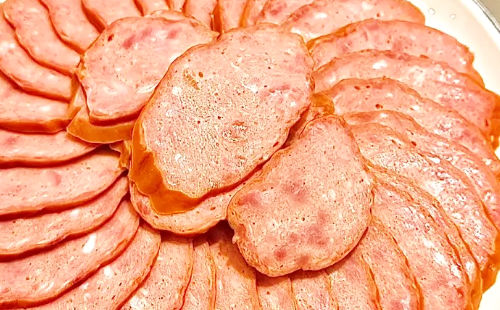
Because the appearance of the intestine is jujube, it is called red sausage.
Compared with sausage, it is not greasy and chewy.
Red sausage is extremely delicious for local people in northeast China, so red sausage is almost a must for those who travel to Harbin.
Souvenirs in Harbin
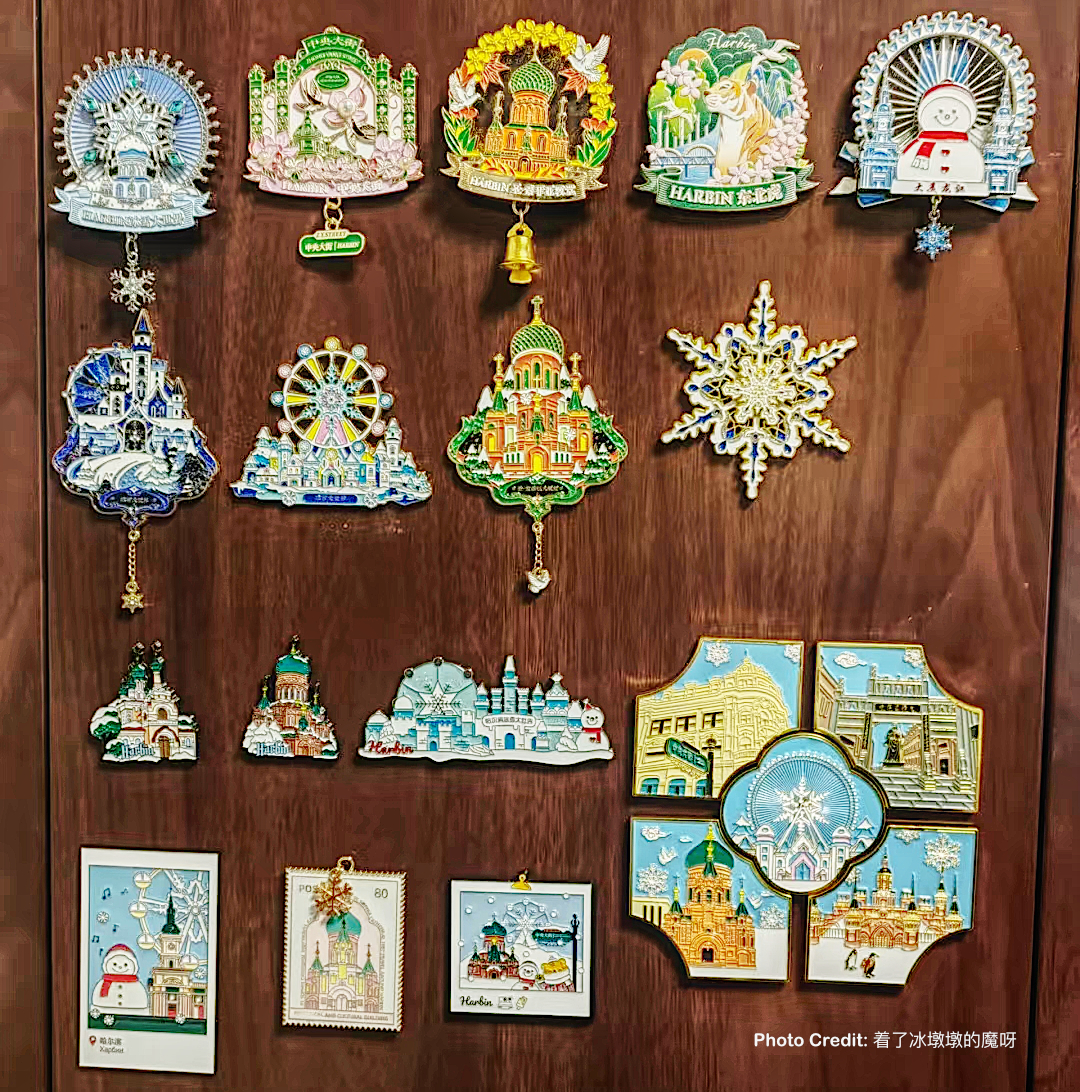
Harbin has many specialties, with Russian exotic food, such as "Daliba" bread, Russian chocolate, candy and so on, but also easy to carry.
In addition, you can also buy some tea, paintings and decorations from Russia or other Eastern European countries in Harbin, which are not too expensive.
In addition, Harbin red sausage and air-dried sausage are also worth buying, these two are Harbin unique flavor food, and both have vacuum packaging, shelf life is longer.
Festivals and Events in Harbin
The Harbin Ice and Snow Festival
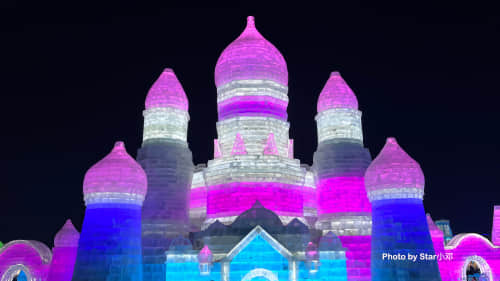
If you’re planning a trip to Harbin between December and February, make sure the Ice and Snow Festival is at the top of your list. This isn’t just your average winter event—it's a full-scale transformation of the city into a frozen art gallery. The intricacy of the ice lanterns and snow sculptures is mind-blowing, with artisans using advanced carving techniques to create massive, detailed works. For something more thrilling, you can catch (or even join!) the winter swimming competition—definitely not for the faint of heart! And while the big opening ceremony happens on January 5th, you can explore most of the ice creations starting mid-December. Trust me, it’s a winter experience you won’t forget!
Harbin Oktoberfest

Every year, during the month of July (exact dates vary), Harbin's Ice and Snow World Park in Songbei District transforms into a beer lover's paradise.
And hey, it’s not just about the beer—though there’s plenty of that! The festival comes with a whole carnival of fun. Think car shows, float parades, and games that’ll bring out your inner child. If you’re lucky, you might even win a prize (or at least a new appreciation for beer)!
So if you’re in Harbin this July, don’t miss the Harbin Oktoberfest. It’s got beer, games, and all the good vibes you need!
Harbin Summer Concert
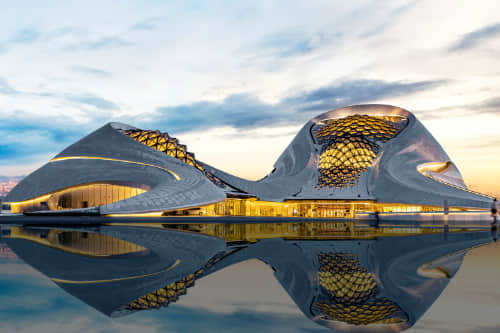
Nestled in the heart of Heilongjiang province, Harbin isn't just known for its icy wonders. Every other summer, the city transforms into a music hub with the Harbin Summer Concert, a prestigious national music event fondly nicknamed "Haxia Club." This ten-day extravaganza celebrates the rich musical heritage of Harbin.
Accommodation in Harbin
Harbin makes it easy to find a place to stay, whether you’re treating yourself to a five-star experience or keeping things simple with a budget option. You’ll find hotels that cover all bases—luxurious, affordable, and everything in between.
For the best sightseeing access, stick to the Daoli District, especially around Central Street. It’s the perfect base for exploring the city. Check out hotels on streets like Zhaolin, Shangzhi, or even Friendship Road—everything you need, from shopping to food to fun, is right nearby. And, with Sun Island and Harbin Ice and Snow World just a short trip away, you'll be able to dive into all the must-see spots without the hassle.
Recommended Harbin Tours
Harbin Summer Tour in 2 Days
Itinerary (Private Car and Guide)
Day 1:
Begin your day at Sophia Square and admire the iconic St. Sophia Cathedral. Stroll down Central Street, a century-old street lined with European-style architecture. Savor an authentic Russian or local Northeast Chinese lunch at a nearby restaurant. Explore Stalin Park in the afternoon.
Enjoy free time in the evening.
Day 2:
Head to Sun Island on the north bank of the Songhua River, either by car or from Friendship Road. Visit the Polar Museum while there. Venture into the Northeast Tiger Park in the afternoon for an up-close encounter with Siberian tigers.
Get more information about Harbin tour packages.
Harbin Winter Ice and Snow Festival Highlights: A 2-Day Tour
Itinerary Details (Private Car and Guide)
Day 1:
Morning: Embark on your tour with a visit to the iconic Saint Sophia Cathedral, the largest Eastern Orthodox church in the Far East.
Stroll down Central Street, a historical pedestrian-only street lined with European-style architecture.
Savor a delicious Russian lunch at a renowned restaurant on Central Street.
Afternoon: Explore Sun Island Park and immerse yourself in the enchanting Winter Snow Expo.
Evening: Marvel at the awe-inspiring Ice and Snow World, a masterpiece of ice sculptures and snow creations.
Day 2:
Morning: After breakfast, head to Zhaoyin Park along the Songhua River. Witness the remarkable spectacle of winter swimmers, including individuals in their 60s and 70s, braving the icy waters. Observe the vibrant winter activities, such as ice skating, skiing, and ice fishing.
Delve into the rich history of Heilongjiang Provincial Museum, housed in a stunning 1906 European Baroque-style building. Admire a vast collection of precious artifacts, including bronzes, gold, jade, ceramics, and paintings, showcasing the region's 40,000-year-old human history and culture. Gain insights into the lives of Russian immigrants and their influence on Harbin's distinctive Russian character through captivating exhibits and historical relics.
Conclude your tour with a visit to Old Dao Wai, a charming district brimming with early 20th-century Baroque-style buildings, forming the largest Chinese Baroque block in China.
Additional Notes:
1. These itineraries can be customized to suit your preferences and time constraints.
2. Transportation and entrance fees are included in the tour price.
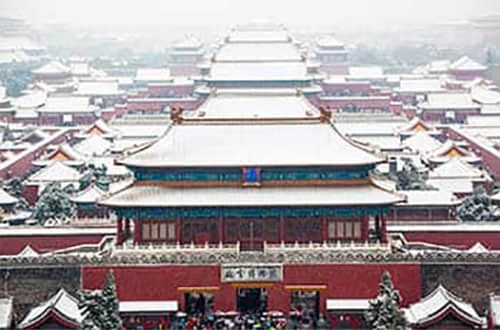 Winter all Over China
Winter all Over China 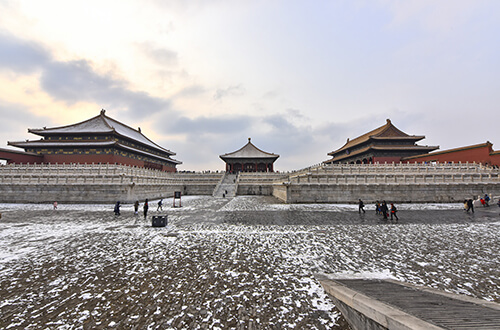 Places to Visit in December
Places to Visit in December 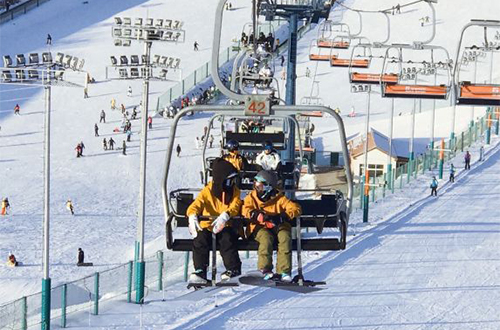 Top 10 Ski Resorts in China
Top 10 Ski Resorts in China 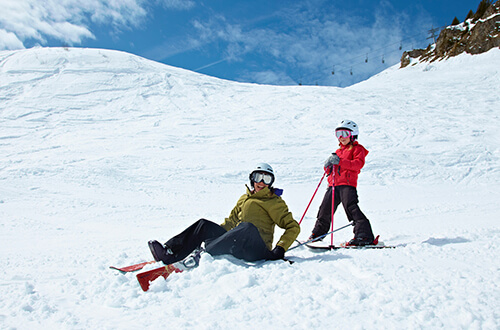 Harbin Skiing and Ice Festival Adventure
Harbin Skiing and Ice Festival Adventure 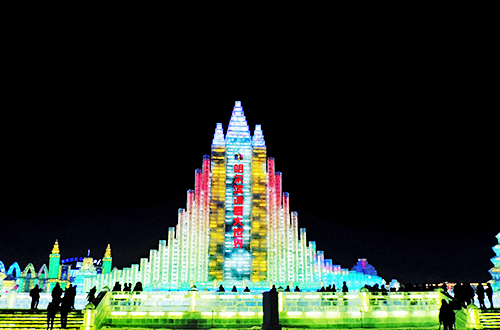 Harbin City Highlights and Ice Festival Tour
Harbin City Highlights and Ice Festival Tour 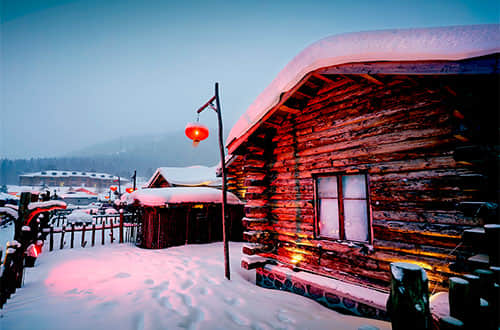 In-depth Harbin Winter Tour
In-depth Harbin Winter Tour